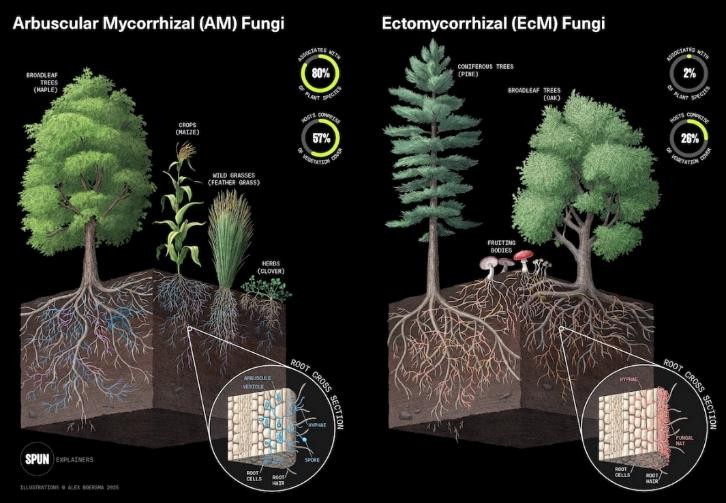PREVIOUS
Global Hotspots of Mycorrhizal Fungi
July 30 , 2025
16 hrs 0 min
42
0
- The Underground Atlas by the Society for the Protection of Underground Networks (SPUN) reveals that over 90% of global mycorrhizal fungi hotspots lie outside officially protected areas.
- These fungi are essential for nutrient cycling, soil health, plant growth, and long-term carbon storage.
- Mycorrhizal fungi form symbiotic relationships with over 80% of plant species and account for up to 30% of microbial biomass in soil.
- They assist plants in absorbing key nutrients like phosphorus, supporting overall plant health and soil fertility.
- They also contribute significantly to carbon sequestration by processing up to 13 billion tonnes of carbon dioxide (CO₂) annually - around one-third of global fossil fuel emissions.
- The SPUN used over 25,000 geolocated soil samples and 2.8 billion fungal DNA sequences from 130 countries to train machine learning models that map global mycorrhizal diversity.
- The digital atlas focuses on two types of mycorrhizal fungi: arbuscular mycorrhizal (AM) fungi and ectomycorrhizal (EcM) fungi.
- The third type, ericoid mycorrhizal (ErM) fungi, was excluded due to the limited sample availability.
- AM fungal diversity hotspots were predicted in the Brazilian Cerrado savannas, tropical forests of Southeast Asia, and Guinean forests in West Africa.
- EcM fungal richness hotspots were identified across northern boreal forests in Siberia and Canada, coniferous forests in the western United States and Canada, and temperate mixed forests in Central Europe and the North American Great Lakes region.

Leave a Reply
Your Comment is awaiting moderation.


